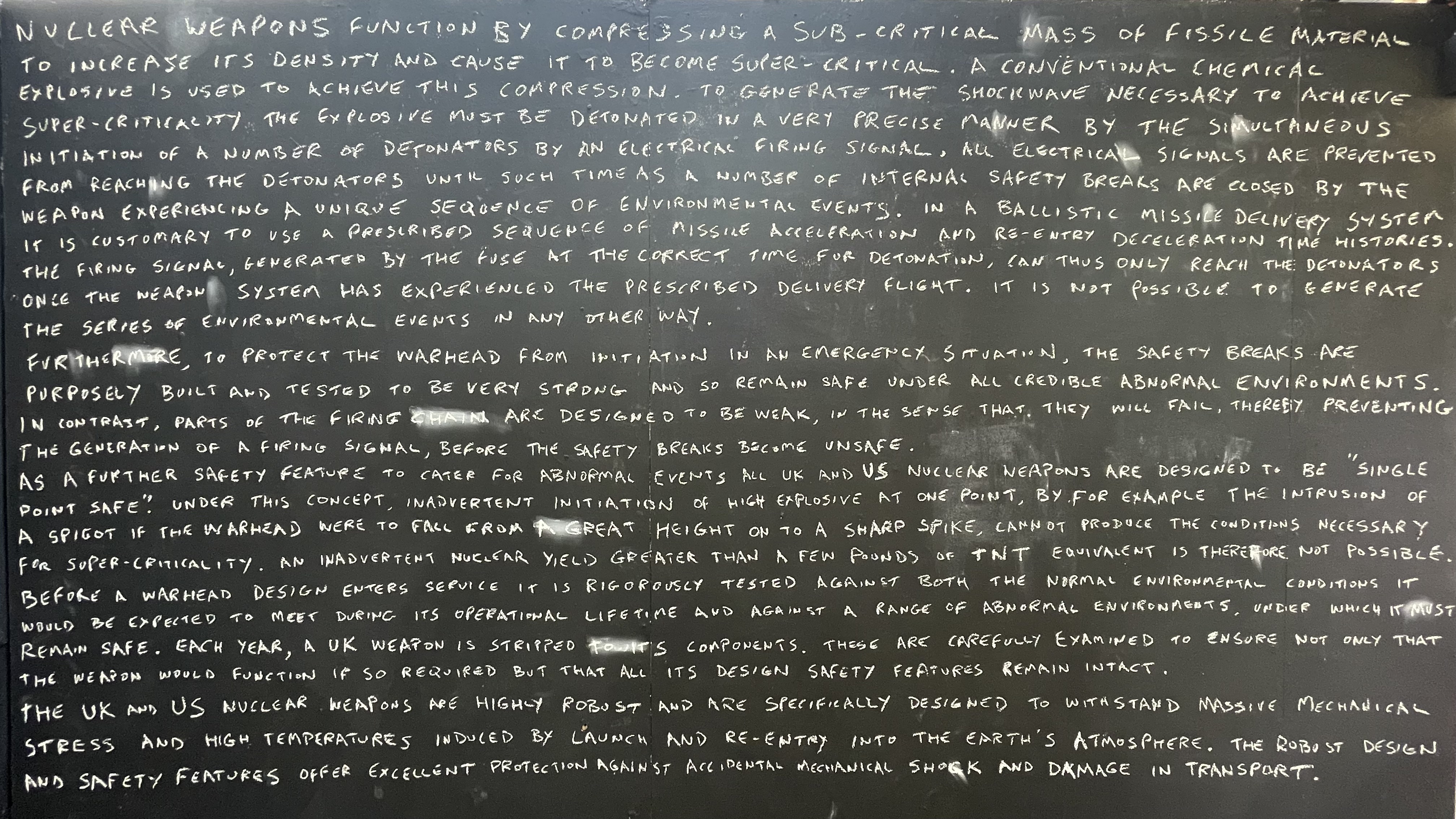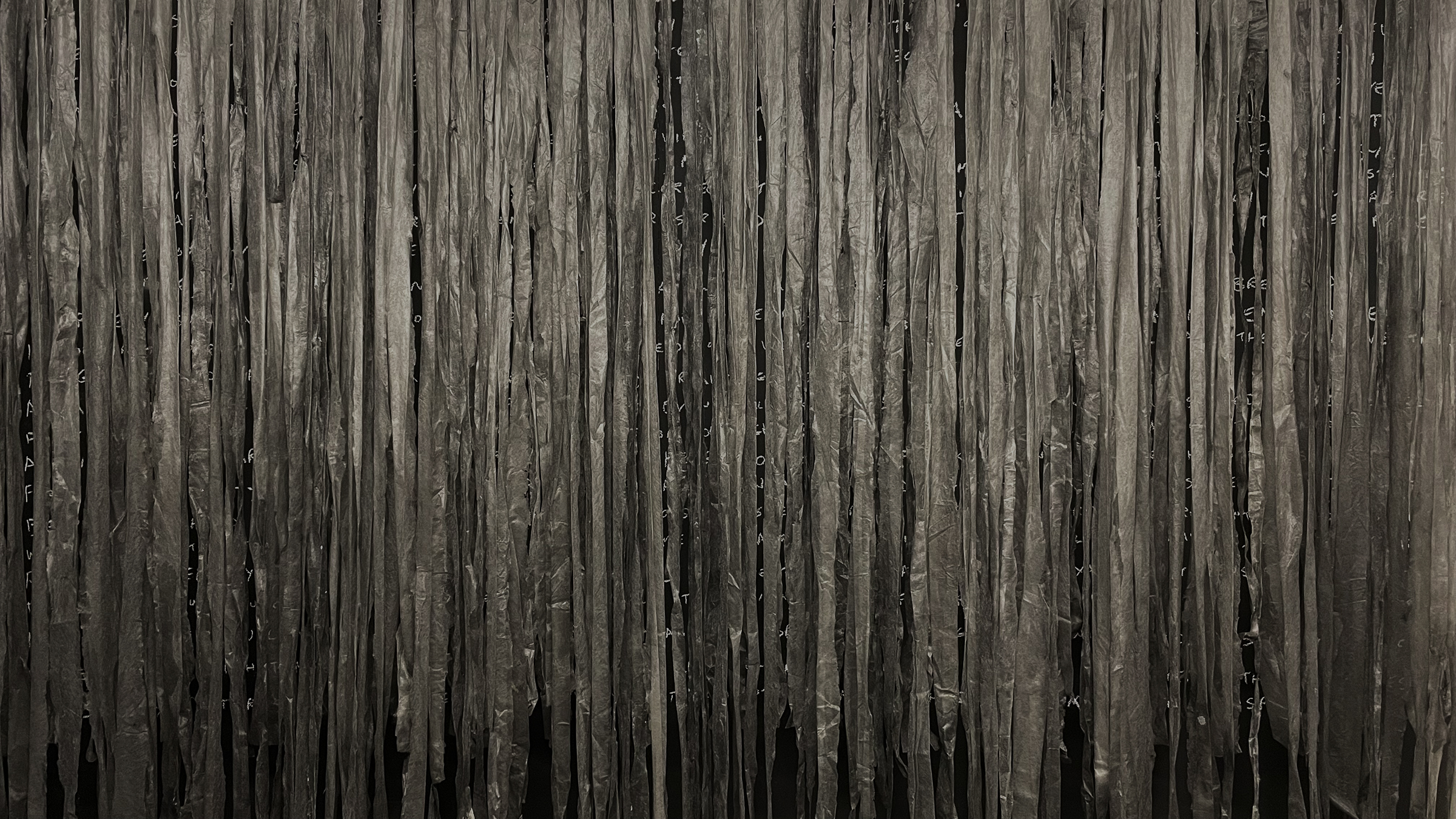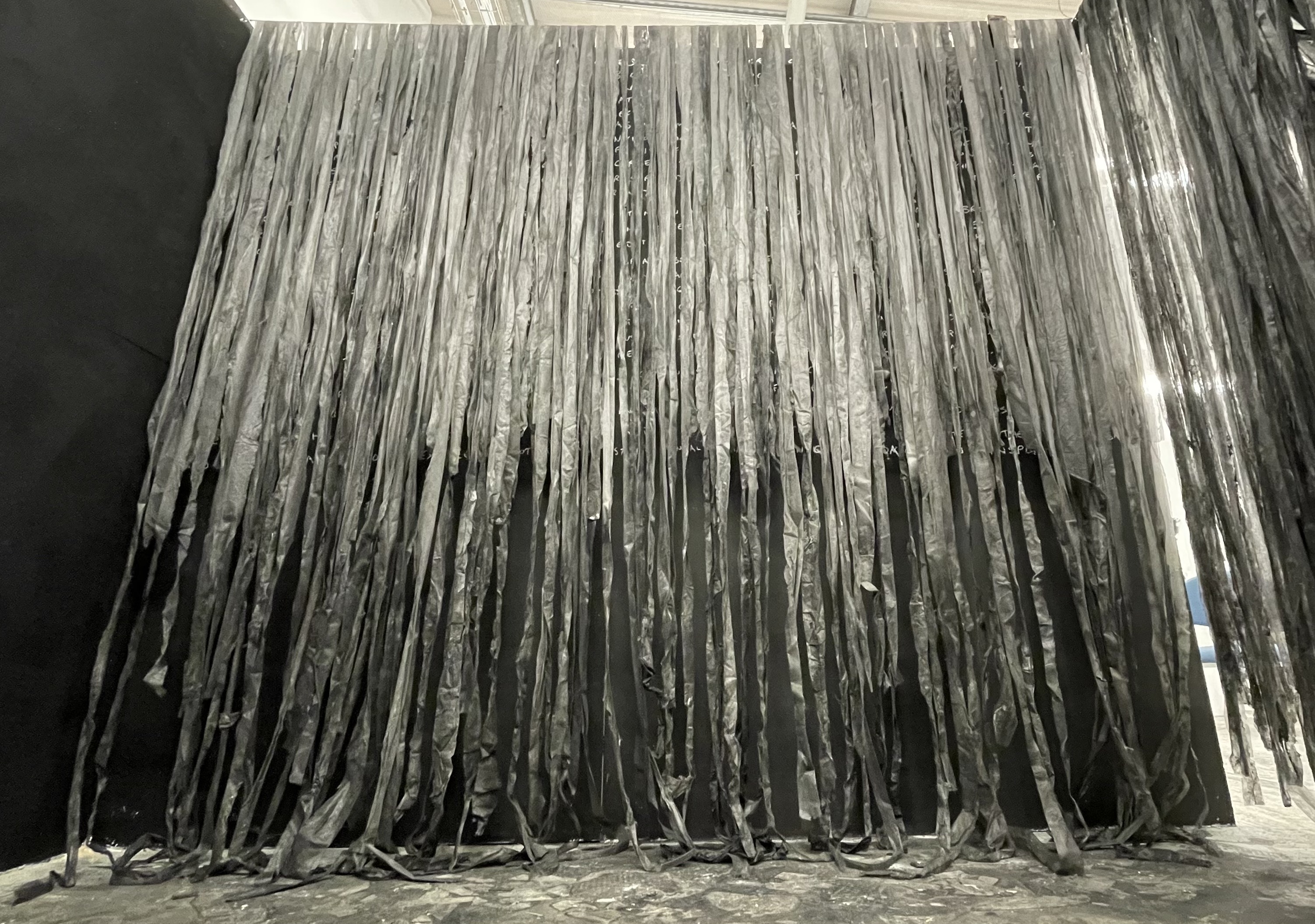Nuclear Information Centre
[NIC/NW/002]

(LAESI) Local Authority & Emergency Services Information On Defence Nuclear Material Transport Contingency Arrangements Edition 12 (November 2021), Nuclear Weapon Design and Safety (Section 3, page 8).

Above and below - The text as shown in the top image now obscured by protective fleece.

Nic Pehkonen, Hidden in Plain Sight, 2022 [white chalk text on wall and 92 x black paint-soaked strips of horticultural fleece, hung over 1.25mm stainless steel cable]. Approx dimensions 2.6m (width) x 2.4m (height) x 20cm (depth).
Defence Nuclear Material (DNM) and other Special Nuclear Material (SNM) is regularly transported around the UK by road, rail, or air. This most commonly comprises nuclear warheads travelling between AWE Aldermaston, AWE Burghfield and RNAD Coulport in Scotland but also may contain, on occasion, other radioactive items or products containing uranium, plutonium, or tritium. A Ministry of Defence (MOD) published document exists to provide local authorities with information about actions to be taken in the event of a nuclear transport emergency and possible radiological release, the current version of which can be found here.
However, the public should be reassured that “rigorous safety procedures are implemented during all such [transport] operations” and “the limited movement of DNM together with inherent safety features and procedures lead to the conclusion that the probability of a transport emergency leading to a radiological hazard is highly unlikely”.
The concept of high hazard, low risk may seem technologically reassuring but this document still makes for sobering reading as you might wonder exactly how the protocols and procedures can realistically be implemented with the speed and efficiency required to protect the population should the worst happen, and a major radiological release occurs? Reading between the lines, we could also ask to what extent documents such as this are fundamentally performative exercises in preparedness, designed to give confidence that such events can be swiftly addressed and managed in an orderly way. When was the last time you received any information or training from either the Government or your local authority in the event of a nuclear accident, of any kind?
This exhibit takes a section of text from the introduction of the aforementioned document but obscures it behind a broken curtain of protective fleece strips (each one representing a designated UK geographic area DNM may transit through), calling into question the usefulness of the text as a source of information. In addition, like transitory nuclear material, the words are there but also not there, largely hidden from sight with the fleece functioning both as a physical barrier and metaphorical “safety” barrier, albeit one with limited radiation shielding properties. The black strips also appear to slowly trickle down the wall, perhaps alluding to the insidious nature and hazards posed by radioactive contamination which could potentially arise during DNM transportation, although as we now know this scenario is highly unlikely.
These nuclear material transports represent some of the regular occasions on which the UK’s nuclear deterrent becomes at least partially visible within the public domain although the default policy adopted by the MOD is to “neither confirm nor deny the presence or absence of nuclear weapons at any particular place and time”.
The temporal nature of the chalk text echoes the transient nature of the nuclear convoys which are deliberately varied in terms of their routes and timings, ensuring they are predominantly kept out of sight and out of mind. So, neither the document described above, nor nuclear material convoys are secret, but they are not widely advertised either!
Information last updated: Sun 08 Jan 2023
Back